Please use the following link to download the April 11, 2020 issue of the syəcəb
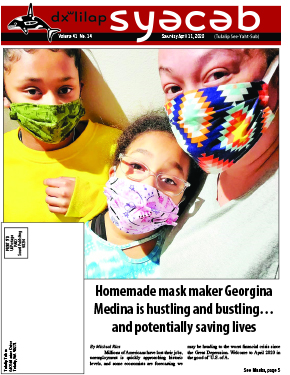
syəcəb
Please use the following link to download the April 11, 2020 issue of the syəcəb


April 8, 2020
Today in Emergency Management, we are working on preparing for a COVID-19 quarantine facility if needed, tracking expenses for reimbursement, and developing a direct relationship with FEMA, rather than filing through the State.
Many news sites are predicting that we are at the peak of COVID-19 infections. We want to encourage you to continue taking precautions. Our Board of Directors Stay Home, Stay Safe order is still in effect. Do not visit with people who do not live in your household and limit travel to essential tasks only.
We’re often asked what individuals can do. Limiting exposure is the first step. Our doctors at the Karen I. Fryberg Health Clinic have asked us to encourage people to continue moving and to practice breathing exercises to be more resilient if we catch the virus. Practice these three to five times a day.
In addition to breathing exercises, walking 30-40 minutes, at least three times a week can improve lung health and doctors encourage us to get up and move for five to ten minutes once an hour. As always be safe and if you have any unusual symptoms (chest pain, lightheadedness, confusion, prolonged shortness of breath, or breathlessness while not doing an activity) please contact your doctor.
Stay safe and healthy and remember wash your hands!
Contact: Ashlynn Danielson, Emergency Preparedness Manager,
adanielson@tulaliptribes-nsn.gov
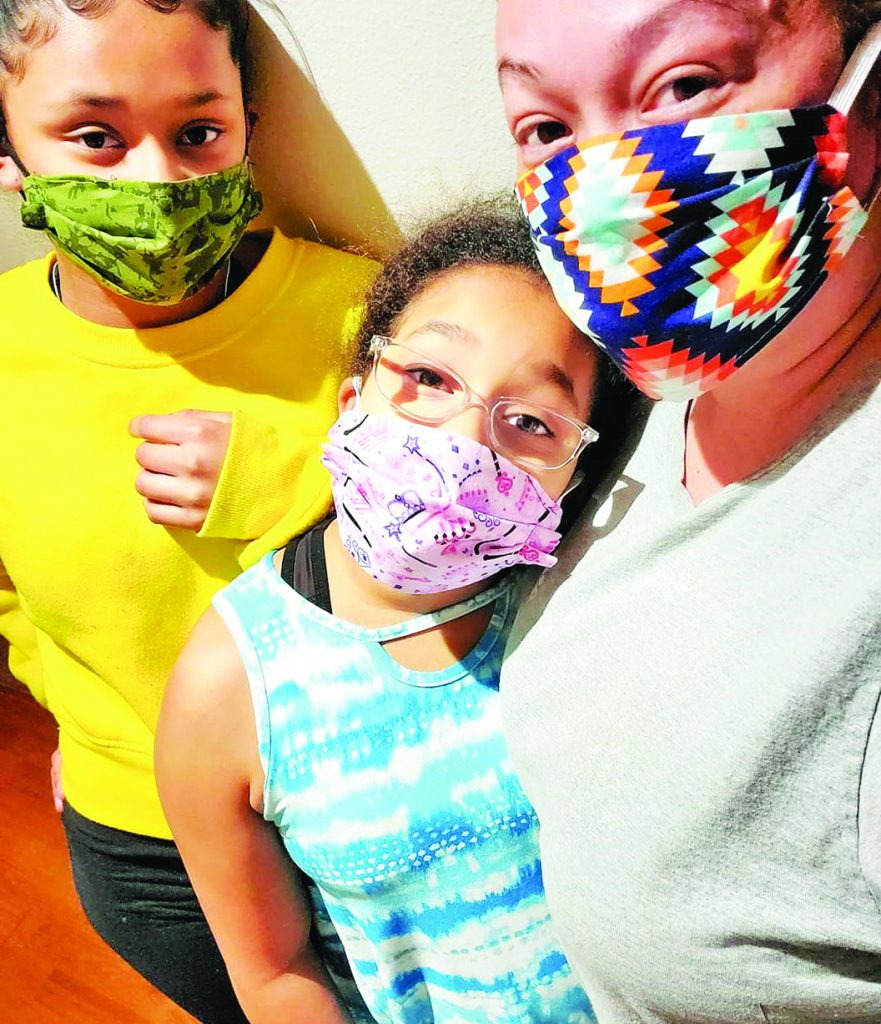
By Micheal Rios, Tulalip News
Millions of Americans have lost their jobs, unemployment is quickly approaching historic levels, and some economists are forecasting we may be heading to the worst financial crisis since the Great Depression. Welcome to April 2020 in the good ol’ U.S. of A.
While countless people are scrambling to find paying jobs or anxiously awaiting unemployment benefits to kick in, one Tulalip citizen’s ingenuity and craftsmanship has allowed her to carve out a critical position in a very niche, yet suddenly surging, market place. Georgina Medina, tribal member and devoted mother of five, is creating stylish, protective face masks to combat the coronavirus.

First, we must interrupt this article with an important message from the Centers for Disease Control (CDC).
“The CDC continues to study the spread and effects of the novel coronavirus across the United States. We now know the virus can spread between people interacting in close proximity even if those people are not exhibiting symptoms. In light of this new evidence, CDC recommends wearing cloth face coverings in public settings where other social distancing measures are difficult to maintain (e.g., grocery stores and pharmacies).
“It is critical to emphasize that maintaining 6-feet social distancing remains important to slowing the spread of the virus. CDC is additionally advising the use of simple cloth face coverings to slow the spread of the virus and help people who may have the virus and do not know it from transmitting it to others. Cloth face coverings fashioned from household items or made at home from common materials at low cost can be used as an additional, voluntary public health measure.”
That message comes directly from the CDC’s own website in an April 3rd announcement ending the weeks’ long debate about whether a non-medical grade face mask can minimize the transmission of coronavirus. The answer is a resounding ‘Yes, it can.’
Now, back to Tulalip tribal member Georgina and her homemade mask making. It was in early March, back before COVID-19 had really entered the everyday lexicon and long before the CDC recommendation, that she had the foresight to hone her craft making skills. A high-risk family member had started to wear a mask as a preventative measure and Georgina thought to herself, “I wonder how difficult those are to make?”
The inquisitive 36-year-old then took to YouTube and watched a video tutorial on cloth mask making.
“It seemed easy enough, so I tried a few different methods on my sewing machine that my boyfriend bought me for Christmas,” recalled Georgina. “It was quite an experience. I messed up a few times until finally finding a way that worked for me.”
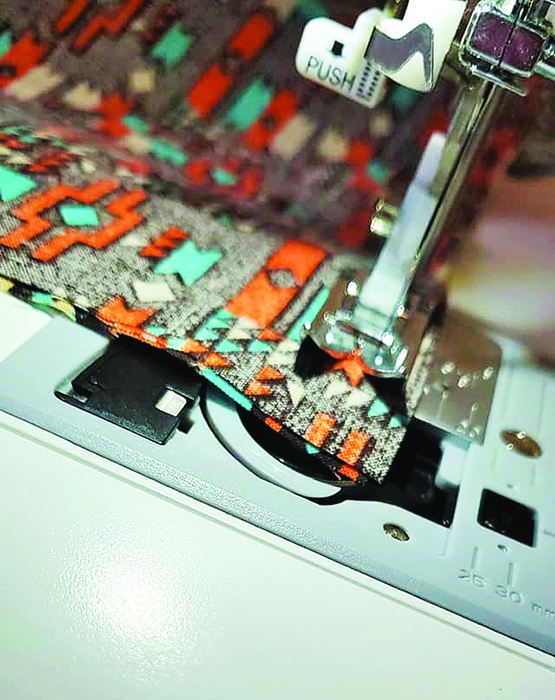
When she perfected her fabrication method, she made a mask using an eye-catching fabric design and posted it on Facebook. The response was incredible. Immediately, she received comments and messages from prevention-minded individuals offering to purchase one of her homemade creations.
“I learned quickly that there was a definite need for these types of masks. After I posted that picture the requests just kept coming,” said Georgina. “Because I purchase all the materials and do all the necessary cutting, sewing and ironing by hand, I decided to charge $10.00 per mask. It’s been one journey after another to my favorite store (Jo-Anne’s Fabric in Smokey Point) to pick out fabrics ever since.”
From the time when she made that initial Facebook post in March, the terms ‘coronavirus’, ‘COVID-19’ and ‘high-risk groups’ have dominated the media landscape. COVID-induced fear and panic has spread like wildfire across not just the nation, but the entire planet. Globally, there are now 1.4 million confirmed coronavirus cases and 85,000+ deaths attributed to the pandemic. The statistics continue to grow at an exponential rate, resulting in health experts no longer simply urging preventive measures, instead they are demanding the use of social distancing and mask wearing when in public.

As a result, Georgina’s 100% double-layered cotton fabric masks are Earth-friendly not only because they are washable and reusable, but they also potentially save lives by mitigating risk of coronavirus transmission.
“If my masks help people and allow some to feel safe going in public like on essential trips for supplies and groceries, then I’m glad I can be a part of that,” said Georgina when considering her masks’ positive impacts. “A mask is not a cure, but it is a preventative measure and that’s better than nothing at all. The CDC has recommended everyone to start wearing them, so I’ll keep making them until we are virus free.”
To date Georgina’s surging sales have led to a customer base spanning the entire west coast. She has shipped her masks to consumers from Alaska to California, the Dakotas and throughout Canada. There’s even been repeat business from a customer in Texas.
“I have an impaired immune system and was terrified to leave the house,” shared customer Callisto. “Now, with this mask and an added filter on the inside of it, I can go get groceries and not be so afraid. [The mask] is beautiful, fits well, and is so needed. And a bargain for the price!”

She delivers locally, offers shipping to those who require it, and even takes custom orders for customers desiring a specific fabric design.
“A huge thank you to those willing to support me and my 5 children at this time,” said the diligent mask maker before hustling back to her sewing machine. She just received another order to fill.
Anyone interested in buying a stylish, protective mask to aid in lowering the coronavirus curve can do so by contacting Georgina Medina on Facebook.
Visit our website at covid19.tulaliptribes.com for our more information
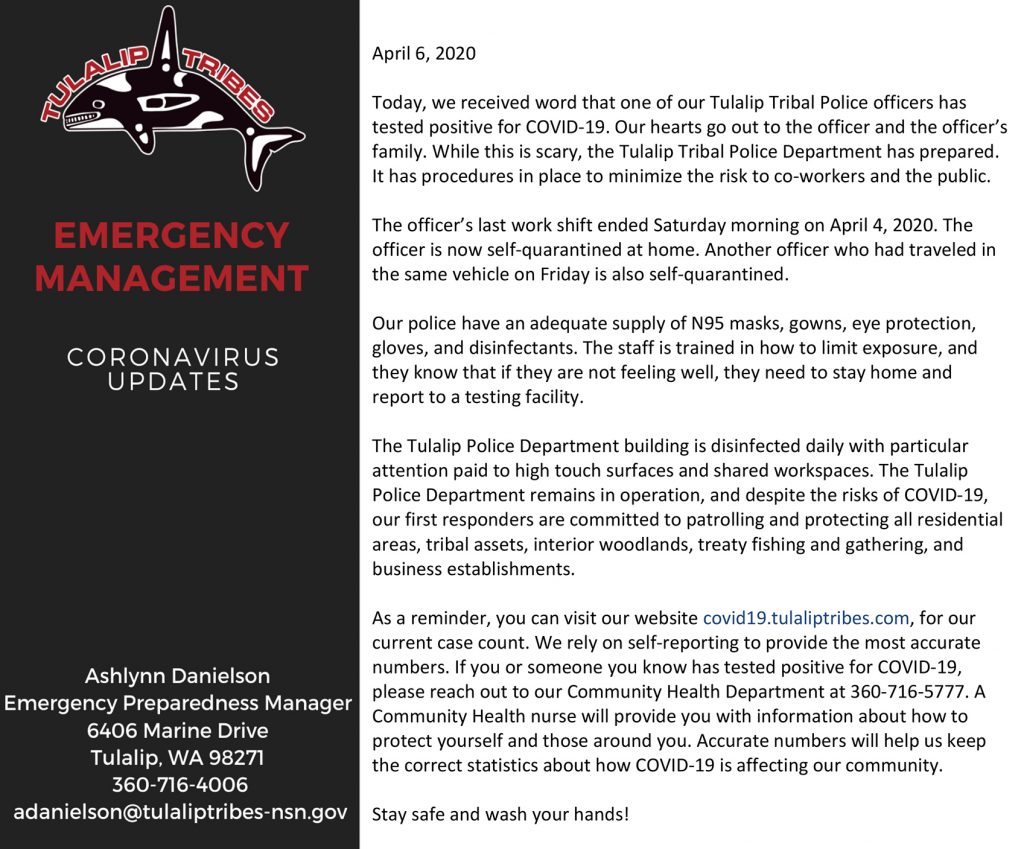

Please use the following link to download the April 4, 2020 issue of the syəcəb
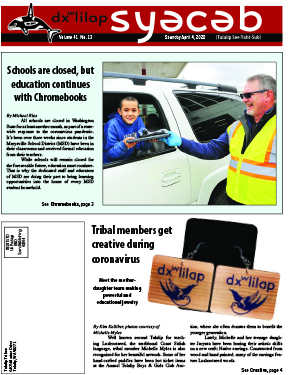

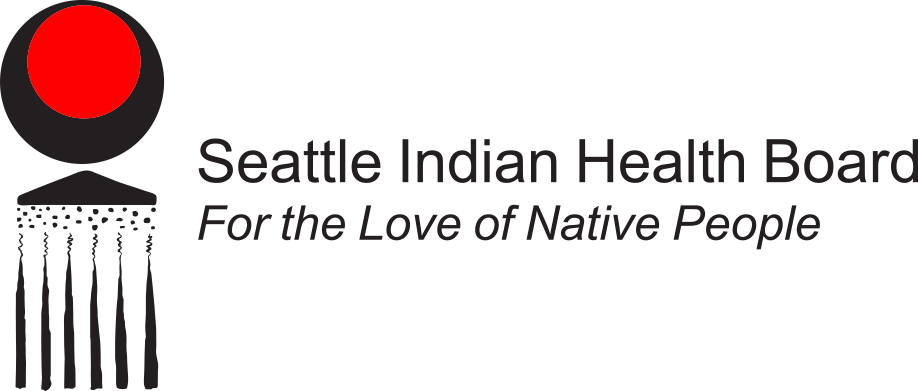
Source: Seattle Indian Health Board
Seattle, Wash.—Eighth Generation, a small business based at Seattle’s Pike Place Market, donated 4,000 N95 respirator masks, 6,000 surgical masks, and 300 face shields to Seattle Indian Health Board amid a world-wide shortage.
The Native-owned company was able to expedite the process to acquire supplies by leveraging its relationships with overseas manufacturers to quickly locate and ship the masks.
Louie Gong, Founder and CEO of Eighth Generation, contacted Seattle Indian Health Board CEO, Esther Lucero, through Facebook, where they exchanged messages to work out the details.
“It is important we support each other during times of crisis,” said Gong. “We are a resourceful community and always figure out ways to lift each other up.”
Seattle Indian Health Board expects to receive the supplies over the weekend, less than two weeks from the first Facebook message between Gong and Lucero.
Over two months, Seattle Indian Health Board has been working with federal agencies and Congress to access more supplies and resources, but has yet to receive any due to the lack of mechanisms in place.
“We are grateful to Louie and Eighth Generation for their support and dedication to our community,” said Esther Lucero, CEO of Seattle Indian Health Board. “We are looking to our community partners for support because the federal process is not providing us the resources at the speed needed for our community and to respond to this virus.”
Seattle Indian Health Board recently needed to redirect personal protective equipment (PPE) from its dental supply after scaling down dental services in response to the COVID-19 crisis. The organization is still providing emergency dental care, while most of the dental staff take on various roles to support the clinic in its COVID-19 response.
Eighth Generation made the donation to Seattle Indian Health Board amid facing its own concerns. They temporarily closed their flagship store at Pike Place Market after Governor Inslee’s stay-at-home order went into effect.
The company, which specializes in products designed by Native artists, is still taking orders online at https://eighthgeneration.com/.
Gong says the company loves taking on big challenges in business and beyond. “We lead with our values. This donation is just our traditional response to a contemporary need. It’s what we do.”
The Snoqualmie Tribe purchased Eighth Generation from Gong in November 2019.
“This donation exemplifies the shared values between the Tribe and Eighth Generation,” said Snoqualmie Tribal Chairman Robert de los Angeles. “It is crucial that we do what we can to support the community in whatever ways we can.”
Meet the mother-daughter team making powerful and educational jewelry
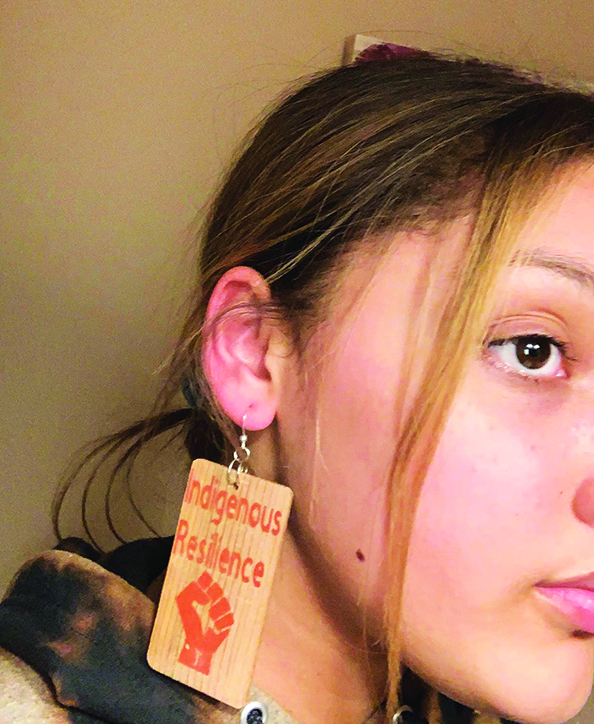
By Kim Kalliber, photos courtesy of
Michelle Myles
Well known around Tulalip for teaching Lushootseed, the traditional Coast Salish language, tribal member Michelle Myles is also recognized for her beautiful artwork. Some of her hand-crafted paddles have been hot ticket items at the Annual Tulalip Boys & Girls Club Auction, where she often donates them to benefit the younger generation.
Lately, Michelle and her teenage daughter Jacynta have been honing their artistic skills on a new craft; Native earrings. Constructed from wood and hand painted, many of the earrings feature Lushootseed words.
The mother-daughter duo has created a bright space in what many consider a gloomy time. During the COVID-19 stay-at-home order, their colorful designs shared on social media give local and non-local residents something exciting to view and even purchase. As Michelle says, “We’re not going to be cooped up forever, get your sexy ready now,”
Michelle agreed to an interview with syeceb staff. The following is an inside look to their craft and how to purchase their earrings.
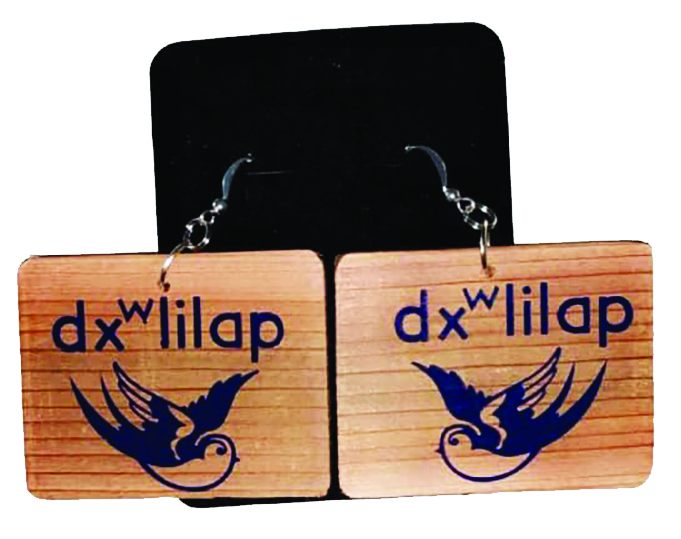
SYS: What are your artistic backgrounds?
MM: My artistic background stems back to Jerry Jones and his training in 2001. He taught our [Language] department how to carve paddles and I’ve been dabbling ever since. Jacynta has expressed an interest in the artwork and she has always been willing to learn. She has a better eye for what might work and her youth brings a creativity that transcends traditional boundaries.
SYS: What inspired you to make earrings?
MM: To be honest, Covid-19 inspired me to make earrings. When the shutdown started, I was looking for something simple to do with the kids. I have been experimenting in different mediums and shaved cedar was something that I had dabbled in. When we first did it, we hadn’t thought about earrings as much as just doing small crafts. We finished the first couple, Jacynta got our jewelry kit and suggested we make earrings and pendants.
SYS: How long does each pair of earrings take to make?
MM: The earrings that I’ve started promoting take about an hour each. Some of the other mediums were experimenting with take a couple of days each.
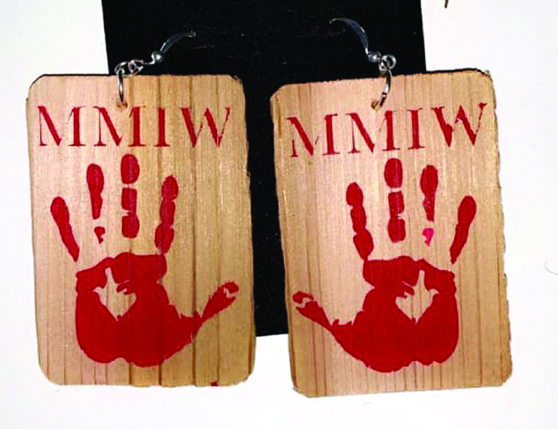
SYS: Do most of the people buying your earrings understand the language? Are some learning first-hand from you?
MM: So far, all of our earrings have been sold to tribal members. Most of these women recognize the symbology and language that we’re using. For example, the Missing Murdered Indigenous Women campaign has grown in strength thanks to women like [activist] Debbie Parker, who has passionately championed on behalf of our sisters who have been neglected or forgotten. We wanted to follow her lead in the promotion of strong Indigenous women.
SYS: How has art helped you through the stay-at-home situation? How has your culture helped?
MM: The time at home has allowed me to actively participate in my kids’ life, which I appreciate. As a teacher, I’m typically busy during their education, so it’s nice to be around for their curriculum.
My culture has always kept me grounded. We’re so westernized as Tulalips that we treat this hiatus as an intrusion. I think of it as our ancestors giving us a hiatus to reflect. That’s why I appreciate my colleagues like Thomas Williams, who are using this time to educate our people on traditional remedies and healing.
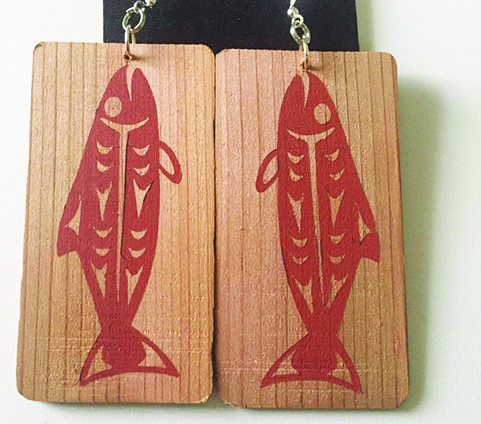
SYS: Have you noticed an upswing on artistic and interactive posts on social media?
MM: I don’t really see a difference online in artwork. Most of the people I’m following are full-time artists who are simply continuing to promote their craft. The difference that I see is in my own time to try out things that I spend the day thinking about, but never have the time to pursue.
SYS: What advice can you offer to those that may be going stir crazy?
MM: For people who may be going stir crazy, I encourage them to set life goals and explore ways to accomplish them. I want to be a better artist and historian, so I’ve been spending my time learning about our history, and experimenting in different mediums. I have to listen to [my partner] Lee constantly complaining about the stock market and politics, which takes up way more time than I’d care to admit.

SYS: How do we purchase your earrings and pendants?
MM: All of my art business has been conducted through Facebook. I’ve been so successful through word of mouth that it’s never made sense to run a website. I have my hands in so many different things, art wise, that I would not have even got to this if it wasn’t for the hiatus from work.
You can find Michelle on Facebook at Michelle Myles, where she posts items for sale and how to purchase them. She also wishes everyone to stay safe and healthy.
If you have artwork, stories, article ideas or photos you’d like to share with us, please email Kim Kalliber at kkalliber@tulaliptribes-nsn.gov or Micheal Rios at mrios@tulaliptribes-nsn.gov.
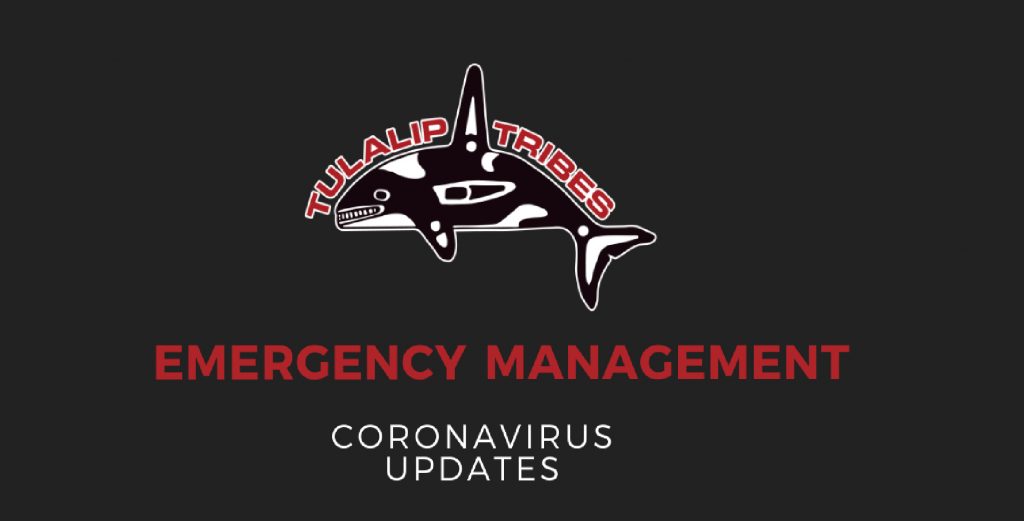
April 1, 2020
We are often asked about numbers. How many people have been tested? How many tested positive? How many masks, gowns, and gloves do we have? Do we have sanitizer? We do have a reasonable amount of supplies. Part of our job as Emergency Management is to track our burn rate and make sure supplies are on order before we need them. Most of this work happens behind the scenes, so today, we’re going to introduce you to the team doing the work. There are many more working on the COVID-19 response, but this is our core workgroup.
Ashlynn Danielson, the Emergency Preparedness Manager, coordinates the team response, bringing together staff from throughout the Tulalip Tribes. Ashlynn creates strategic plans, provides guidance, and best practices to leadership. Vanessa Kelsey, from Contract Compliance, has been detailed into the effort. She is keeping tabs on our inventory and helping to draft protocols and SOPs.
Jim Steinruck from the Health Clinic is leveraging his health care networks to keep us connected with local health systems. He is heading the effort to create a quarantine site for Tulalip, and he also recently secured 100 test kits for Tulalip.
Kelvin Lee from our Pharmacy has been diligent about protecting his team, so they can continue serving the Tulalip community through the Pharmacy. He has also been invaluable in securing supplies of masks, gloves, and sanitizer.
Media and Marketing has been assisting us with getting our message out to the community. Niki Cleary has been actively answering questions on social media, and her team have been sharing information on social media, in the Syeceb, Tulalip TV and their other channels.
Chris Wright from our GIS (Geographic Information Systems) team has been instrumental helping us track all of our information. He is currently working with Media and Marketing to launch a Tulalip COVID-19 response website.
Kevin Jones from TDS and Dr. Okemah from the Health Clinic are working on tele-medicine in order to continue serving our people who still need routine medical care. We are hoping to see video appointments launch soon.
Community Health has been working around the clock. Verna Hill and her team have been tracking all of the self-disclosed COVID-19 cases, providing guidance to patients and working with Snohomish Health District to map COVID-19 on the reservation.
Chenoa Henry, with our Grants department, continues to research funding opportunities and provide guidance, so we are eligible for current and future grants.
Tulalip Bay Fire and the Tulalip Police Department are still interacting with the community on a daily basis. The fire department is working with Community Health on patient transport services, and the community paramedic Jim Reinhardt is helping diagnose and interface with community members who are worried about their immediate health. The Tulalip Police have continued to protect and serve our community, and have also offered to assist in any requested efforts.
We know that it’s frustrating when we don’t have new information to share but, we wanted to give you a snapshot of what we are doing and let you know that there is a team working hard to keep Tulalip healthy and safe.
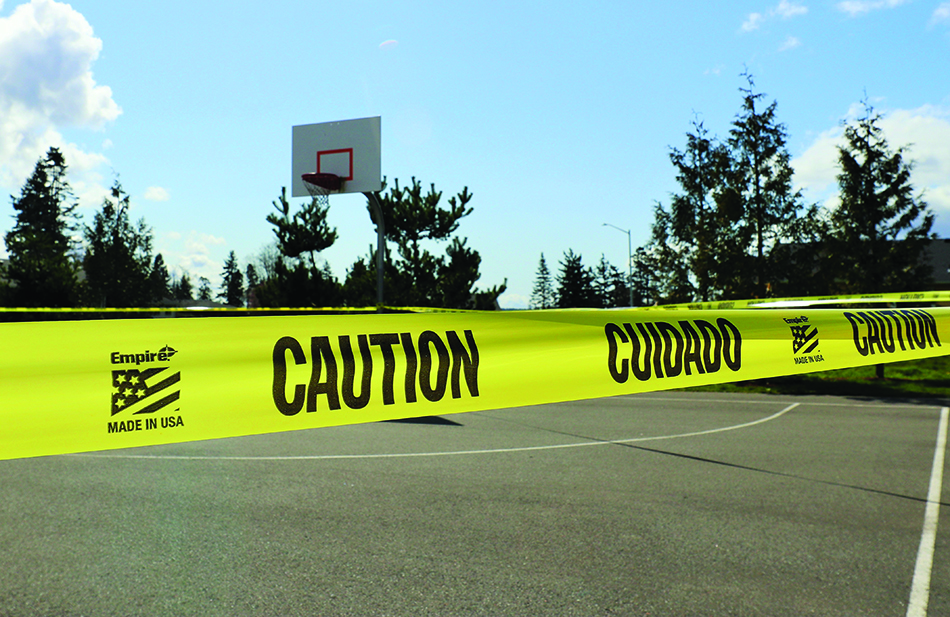
By Micheal Rios, Tulalip News
On March 23rd, Governor Jay Inslee announced his order for Washingtonians to stay at home. The rationale was simple: by staying home the chances of spreading coronavirus is minimized and, in effect, everyone abiding would be doing their part to ‘lower the curve’. Hours later, the Tulalip Tribes issued an emergency proclamation for all citizens on the Tulalip Reservation to ‘Stay Home, Stay Healthy’.
“We’ve been very clear on the need for everyone to stay home. The less time we spend in public, the more lives we will save,” explained Governor Inslee. “We know [this] announcement affects millions of our livelihoods and means life will look different in Washington. But these necessary restrictions will protect us and our loved ones so that we have a livelihood to come back to.”
Fast forward two-weeks and while most Washingtonians are doing their part, some still don’t grasp the seriousness of this global pandemic. The numbers boggle the mind. As of April 1st, there have been at least 905,000 total confirmed cases in 192 countries, with the most alarming number, the death toll, continuing to rise at an exponential rate. Globally, more than 45,200 deaths are now attributed to COVID-19.
Yet, locally on the reservation it was still a common occurrence to see children, teenagers, and adults casually out and about, partaking in leisurely activities. Gathering at Mission Beach? Yup. Games of pick-up hoops at the outdoor courts? Sure. Energetic youth roaming free on the ball field and neighborhood parks? Of course.
Social disobedience is nothing new. Ask any parent and they’ll attest to the fact that once you tell a child they can’t do something, regardless of what it is, that something becomes the only thing they want to do. That is until the consequences become severe enough that it’s no longer in their best interest to be disobedient.
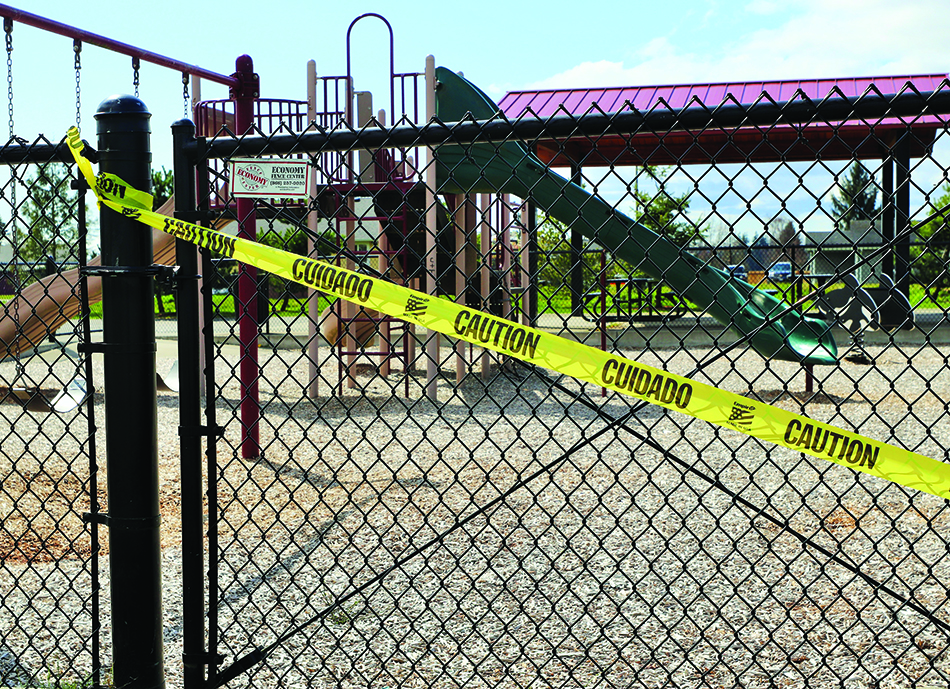
And no, this type of behavior isn’t only on the reservation. The entire state is witnessing social disobedience from individuals and businesses, alike.
“Since I announced the ‘Stay Home, Stay Healthy’ order for our state, we have seen social distancing and other compliance from businesses and residents across Washington for the good of the public health,” Governor Inslee recently said. “But thousands of calls are also pouring in to state and local agencies from concerned residents, with reports that some individuals and businesses are not in compliance.
“The actions of those who willfully violate this order may ultimately drag out the COVID-19 crisis even longer.”
Tulalip leadership has responded to this woeful behavior by implementing a new tribal code authorizing the enforcement of stay at home quarantine orders. To further reinforce the ‘stay home, stay healthy’ directive, all reservation parks, outdoor basketball courts, Youth Center skate park and ball field, and Mission Beach public access points have been permanently closed until further notice.
Once a welcomed sight to all, now these recreational areas are sealed off with bright yellow CAUTION tape. Impossible to miss, the message is loud and clear. Similar to the Tribe’s adult playgrounds – Tulalip Resort, Quil Ceda Casino and Bingo – the outdoor community areas are officially closed for business, pending a must needed flattening of the curve when it comes to COVID-19 cases.
“The safety of our community is of the utmost importance,” said Chairwoman Teri Gobin. “We want people to stay home. [By doing so] it is slowing the curve and lowering the number of deaths. The Board of Directors will continue to adapt and make the best decisions we can for our community and our Tribe.”